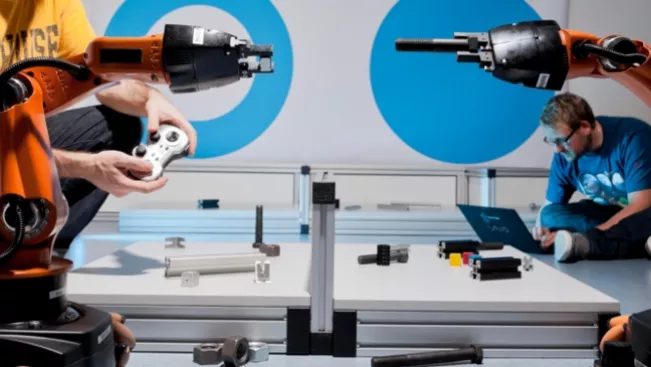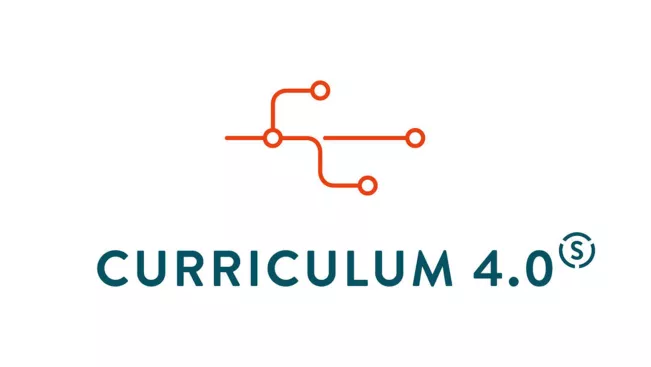Research at the university
Research Database: Projects
Forschungsprojekte (229)
In our society, technology is still rather associated with masculinity. There have hardly been any studies on the relationship between visual technology communication and gender in Germany so far. In the first phase of her research, doctoral student Juliane Orth is therefore planning an inventory analysis (image content analysis) of current media images that depict people (in action) with technology. In addition to daily newspapers such as the FAZ, trade journals such as the Technology Review will also be examined. In a second step, the impact of existing and alternative media images will be evaluated by interviews.
Architectural journalism is considered to be a comparably unexplored subject in academic journalism. While there are plenty of empirical studies on journalistic genres such as politics, science and technology journalism, there are few findings on architecture journalism. Yet architecture plays no less important a role in the overall social context than politics and economics. This becomes clear in urban planning and development, new housing concepts and public building projects. Doctoral student Patrycja Muc is therefore conducting a content analysis of how German daily newspaper editorial offices report on architecture. In addition, guided expert interviews with architects and journalists will shed light on the assessment of the relevance of architectural topics by both actors.
Advanced technology makes it possible to display digital information distributed in space and even to create artificial, purely virtual realities. These kinds of augmented and virtual reality user interfaces pose new challenges to designers and users from design to use, as they differ fundamentally from conventional applications in many ways. In the context of her dissertation, doctoral student Veronika Krauß is researching the requirements that designers and users place on design tools and processes and how the design of such systems can be made more accessible. Her special focus is on the investigation of prototypes.
When thinking about a more sustainable world, it is enormously important to obtain chemical resources primarily from renewable raw materials. One possible candidate that can also be used in the long term in a wide variety of preliminary stages in the chemical industry is lignin. To this end, doctoral student Jonas Bergrath is looking at various biogenic wastes (including waste wood and pomace from winegrowing) in order to isolate lignin in as "green" a way as possible. Since lignin is extremely difficult to reproduce, he uses a wide range of analytical and computational chemistry methods to reveal possible structure-property correlations. The overall goal is to relate the physico-chemical properties (including adsorption and behaviour in solvents) to structural elements of lignin and to use it as an adsorbent for organic small molecules (e.g. pharmaceuticals) in wastewater treatment.
Cryptography, i.e. encryption technology, is used everywhere today. In online banking as well as when opening the car by remote control. However, a new type of computer, the quantum computer, threatens the current generation of encryption systems. In order to remain on the safe side, new cryptographic procedures must be conceived, developed and tested. This branch of research is called Post-Quantum Cryptography. PhD student Ruben Gonzalez is researching how post-quantum cryptography can work on the smallest devices, the constraint embedded devices (e.g. fine dust sensors, credit cards). Supervision: Prof. Dr. Karl Jonas
The Japan-EU Free Trade Agreement (JEFTA for short), the unknown foreign deployments of the German Armed Forces or the "Europe 2020" strategy to fight poverty - hardly anyone is likely to have heard much about these topics, mentioned here as examples, in the media in recent years. And this despite the fact that they have a high news value for society. This hitherto little-researched phenomenon is also called agenda cutting in communication science. But why are so many important news items deliberately or involuntarily neglected, while other, less relevant news items are discussed in a continuous loop? Doctoral student Filiz Kalmuk is investigating this question in her dissertation project. Using a mixed-methods approach, the different mechanisms and reasons for agenda cutting will be investigated with the aim of finding out what influences there are on the micro, meso and macro levels in the dethematisation of events and news. The influence of public relations and the tools it uses for agenda cutting will also be examined.
Hydrogen is a promising energy carrier that has received more attention in recent years. Through electrolysis, excess renewable energy can be converted into hydrogen, stored, converted back into electricity at a later time, or used in other energy sectors. Storage systems based on this principle can be implemented at different scales, ranging from self-sufficient energy supply for several houses, to stabilization of energy supply networks. PhD student Michael Bareev-Rudy is working on the meta-modeling of hydrogen-based hybrid storage systems to enable optimal sizing and control for different scenarios.
TransHyDE-Sys is a system analysis project and is a joint project within the lead project TransHyDE. In addition to the system analysis, there are also implementation and research projects on the topic of H2 transport within the lead project. As a cross-sectional project, the system analysis performs a special function: On one hand, essential system knowledge for the construction and coupling of the energy infrastructures is generated with the help of own modeling and simulation work as well as ecological analyses. On the other hand, observations, analyses and requirements of the implementation and research projects are to be recorded, compared and integrated within existing knowledge. The results are to be incorporated into a continuously adapted roadmap, which will then help shape the content of the next project phases and provide important recommendations for action for external stakeholders. The sub-project MechaMod of H-BRS focusses on the development of physical-chemical models for all relevant mechatronic components of networks for transport of different gas compositions to be analyzed. This includes components for coupling gas and power networks and for driving gas networks, especially electrolysers, fuel-cell power plants, compressor and regulator stations. A particular challenge consists in modeling dependencies from the actual gas composition including impurities. Prototypes of the novel models will be integrated into the simulation frameworks used by partners. As a main result, models for the relevant mechatronic components shall be available, based on differential equations and characteristic maps and allowing for system simulation and analysis of potential transformation pathways to a hydrogen transport infrastructure. An accompanying analysis of technical limits and contingency scenarios will be performed. Additional contributions support model comparison, life cycle analysis, cooperation with stakeholders and the roadmap.
Very often, objectives such as accuracy and precision of robot behaviours are not the only requirements imposed on them. For completing tasks defined in dynamic and unstructured environments/settings, it is necessary that the employed software additionally enables high degrees of efficiency and robustness in a robot, given the system’s mechanical structure and actuation capabilities. It has been shown that the advanced efficiency and robustness of humans and animals, in performing the locomotion and manipulation tasks, are enabled by a control paradigm that exploits (i.e. takes the advantage of) their natural dynamics. Those insights motivate us to consider the same control paradigm, i.e. embrace natural dynamics of the robotic systems while addressing the problem of enabling such advanced performance for our robots. Doctoral student Djordje Vukcevic works on developing reusable control methods for exploiting robot's natural dynamics in unifying, explicit, general and real-time applicable ways. Those reusable solutions will provide a strong step towards advanced and computationally efficient control algorithms and architectures, and their automatized and formal development.
The potentials and effects of digitalisation today encompass all areas of human and social activity. Universities are therefore responsible for enabling their students to develop competences that not only include the competent use of digital technologies, but also the ability to assess the potential and effects of digitisation in society and the world of work, to actively and reflexively shape digitisation processes and to keep pace with the rapid dynamics of change. In 2019/2020, the state of North Rhine-Westphalia developed the Curriculum 4.0.nrw funding line, which is intended to support the Hochschule Bonn-Rhein-Sieg in exploiting the opportunities of digital teaching, among other things. In the Department of Electrical Engineering, Mechanical Engineering and Technical Journalism, this funding line will be used to further develop the Master's programme in Sustainable Engineering Sciences, which addresses the funding line's thematic areas such as technical innovation and digitalisation.
Project management at the H-BRS
Prof. Dr Marco JungContact Points
Centre for Science and Technology Transfer (ZWT)
Room
F 405
Vice President Research and Transfer
Campus
Sankt Augustin


